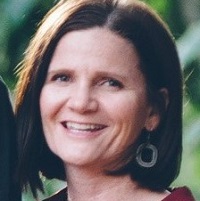How apps are changing dating worldwide
20 Jan 2021


There was a time when you found a partner by chance. Random events, workplaces, friends and unexpected encounters thrust people together and love took over. That takes time, and these days, we’re too busy for that. Also, we want chance taken out of the equation. Online dating seems like the solution: for over a decade it’s revolutionized match-making. And not only that, it’s also helping revolutionize thinking about dating and coupling up in cultures around the world, some of which will surprise you.
Let’s start exploring these topics with the man responsible for taking the world’s largest dating platform global. Andy Andersen, who works on international growth at Tinder, has helped the app approach 60 million users in 56 languages in 190 countries.
How dating apps are changing the global cultural landscape
Andersen outlines the cultural challenges in taking a Western-centric dating app global: “You have to think about some of these ancient traditions or ways of life that still remain in many parts of the world where dating is a foreign concept. You can think about some of the more conservative areas, where there may be religious or cultural limitations and a lot of family involvement. Sometimes you see that in the Middle East; you would see that in parts of Southeast Asia, like maybe in India; those areas. You’ve seen new trends emerging where people are starting to be introduced to this idea of dating online and actually choosing a partner for themselves.” Andersen is, of course, right. Dating in the majority of western cultures has an ease and an autonomy that aren’t found in some traditional areas of the Middle East and Southeast Asia. Online dating has become an interesting space because these areas in which dating is rooted in thousands of years of history are changing as young people embrace technology and have a window to the entire world in the palm of their hand. With the advent of the internet and its growing worldwide accessibility via smartphones, even the reason people go online to meet others has changed. Those cultures that used to be isolated now have a global view. “You can now have a pen pal or do a video call with someone on the other side of the planet instantly. You could have absolutely no previously existing connections with this person. This has transformed this idea of ‘the stranger’ in a good way as people engage with people that they might not have engaged with before.” Dating now transcends demographics, socioeconomics, ethnicities, religions, everything. This isn’t about blending cultures together to create a homogenized landscape; this is about opening cultures to new ways of thinking. Andersen addresses this cultural evolution, saying “that conversation in a lot of ways is starting to open up this dialogue across the world that enables people to speak more openly with one another and to get to know each other and to reduce these kinds of walls…which I personally think is a good thing.”Removing blockers
Before Andersen pushed for localization, there were some challenges he had to resolve. He stresses that not everyone in an organization is interested in thinking about moving into new countries as they try to establish themselves in their primary market, so you need to work to get people on board. “I like to call it ‘evangelization’ in terms of getting champions and really getting people excited about international growth and languages and localizations…you need to have talks across the company and talk to different organizations and get them excited about their part of the process…you have to sell the ‘Why are we doing this? What’s the benefit to you?’” Andersen combined this internal championing with an analysis of the localization tools and procedures that were in place when he joined. He looked for where improvements and efficiencies could be found; for example, “something's taking two weeks when it should really only be taking one week. It could be vendors; it could be expectations; it could be a lack of documentation.”The path to Tinder’s success
Along with this analysis and evangelization, Andersen states the other key activities that have helped Tinder expand into more than 200 territories:- Look at all markets—Tinder looks at the markets where dating apps would be perceived to be outside the cultural norms and is prepared to go there anyway. They have removed a perceived obstacle.
- Great user experience (UX)—Their core functionality has been simple from the beginning—you can be downloading and swiping within minutes—and they’ve kept it in every localized version.
- Limited-access UX—For countries where the latest smartphone technology is still being onboarded or Wifi isn’t as easily accessible, Tinder created “Tinder Lite” which has less advanced features and is easier to run on limited technology or internet bandwidth.
- User acquisition—They focus on app store optimization (ASO) and search engine optimization (SEO) and drill down into the terminology of the region. They explore things like the local slang and use localization services experts to find out how the population really talks.
- Relatability—The app team ask the questions “Does it feel local?” and “Is the product relatable to me?” Andersen says, “you want to be able to say, ‘That looks like something that myself, my friends, my family would use, and let me download that because it looks relevant,’ versus something that looks like a foreign product.”

